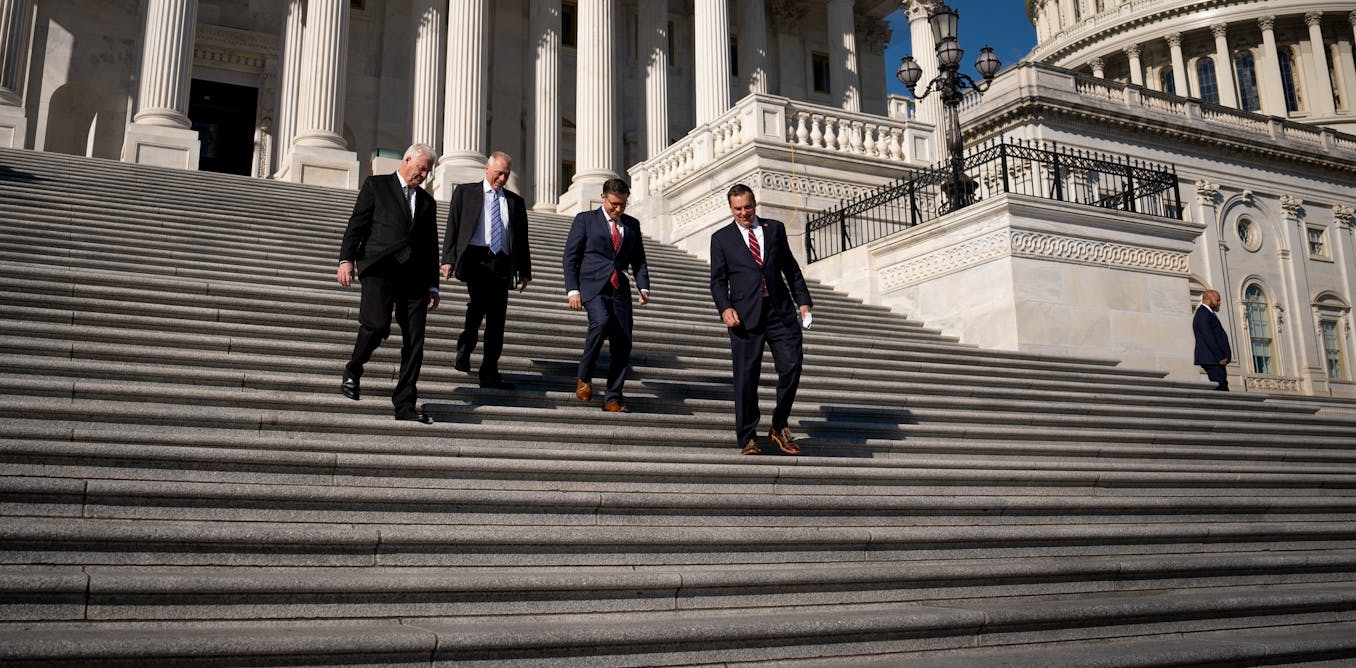Business
Fliers Are More Worried About Plane Safety Even as Air Travel Remains as Safe as Ever
A spate of high-profile airline accidents this year have left a lasting impression on the public.
There was the fiery Japan Airlines runway collision on Jan. 2, followed days later by the Boeing Co. door-plug blowout. From lost wheels to a turbulent Singapore Airlines flight this week, the headline-grabbing events have left the flying public to wonder whether it’s still safe to fly.
The reality, statistics show, remains that getting on a Boeing or Airbus SE jetliner is still exponentially safer than the drive to the airport. Last year, there wasn’t a single fatality among the 37 million commercial airline flights.
While 2024 won’t match that record, it’s been an average year in terms of airline safety. Yet public perception remains jittery. U.S. web searches for “flight safety” hit the highest level in March since October 2014, according to Google Trends.
That year a decade ago was a particularly bad one for aviation fatalities. The disappearance of Malaysia Airlines Flight 370 in March was followed by the shooting down of the same carrier’s Flight 17 over Ukraine in July and an AirAsia crash in December.
The accidents this year have caused far fewer fatalities than in early 2014 or in 2019, when the second of two Boeing 737 Max flights crashed in March, killing 157 people in Ethiopia.
Five people aboard a Japan Coast Guard turboprop lost their lives in early January when the plane ventured onto the runway path of an incoming Airbus A350. While nobody died in the Jan. 5 structural failure of a 737 Max 9 operated by Alaska Air Group Inc., the accident dealt a serious blow to Boeing’s credibility and to passenger confidence.
Read More: Another Boeing-Linked Whistleblower Has Died
Since then, a series of more minor incidents, from a Delta Air Lines Inc. Boeing 757 losing a nose wheel to a United Airlines Holdings Inc. 737 Max skidding off a runway in Houston, have received widespread media coverage.
On the flight from London to Singapore this week, a 73-year-old British man died from a suspected heart attack after the plane encountered severe turbulence.
“There is reason for the public to be concerned but I think the concern is elevated because of the real focus that some news stations have given,” said John Goglia, an aviation safety expert and former member of the National Transportation Safety Board. “The wheel falling off the aeroplane never would have gone anywhere; in some local newspapers it may have been a one-inch column.”
Indeed, government statistics indicate the U.S. is having a fairly normal year.
In the U.S., there were 11 accidents and incidents on commercial passenger or cargo flights in the first quarter, according to the NTSB database. That’s slightly above an average of 9.7 in the decade from 2010 to 2019. Serious cases stood at four in the quarter, slightly above the pre-Covid average of 3.3. The figures are based on cases the NTSB investigates, which include all accidents and only some incidents, so the numbers can vary.
Meanwhile, the Federal Aviation Administration reported progress in one problem area. The rate of serious runway incursions in the first quarter decreased by 59% from the same period in 2023, a historically high year for such events. The current rate for 2024 is below the annual average of 0.31 per 1 million aircraft operations over the last decade, according to data provided to Bloomberg.
“Aviation is the safest way to Travel and that’s because we never take anything for granted,” said the FAA, which is responsible for airline safety in the US. “We are always looking for risk and ways to mitigate it.”
The extended spotlight on Boeing has brought significant attention to the planemaker, with some fliers filtering out its 737 Max jets. Yet many of the incidents have occurred with older planes, and are more likely to be traced back to an airline maintenance or operational issue than the original design or build quality.
“In this environment, any operational event no matter how routine can get outsize attention,” Boeing CEO Dave Calhoun said at the company’s May 17 annual meeting.
Many of the events which have worried fliers this year, from landing gear collapsing to pilots overshooting runways, are classified as incidents rather than the more serious “accident,” which the International Civil Aviation Organization defines as involving a person being fatally or seriously injured, the aircraft sustaining damage requiring repairs or the aircraft going missing.
That doesn’t mean there aren’t improvements to be made, according to Loren Groff, the chief data scientist at the NTSB. He pointed to the work being done to improve staffing and training for air-traffic controllers after some recent errors and near-collisions on runways.
“Overall, it’s amazing that the U.S. aviation system, and most of the world in general, can do something so complex so successfully,” Groff said. “Would I be afraid of aviation in any way? No, absolutely not.”
-

 Business12h ago
Business12h agoUS House passes measure that could punish nonprofits Treasury Department decides are ‘terrorist’
-

 Business12h ago
Business12h agoFast fashion may seem cheap, but it’s taking a costly toll on the planet − and on millions of young customers
-

 Business1d ago
Business1d agoNew Information: These HV Big Lots Are Now Staying Open
-

 Business1d ago
Business1d agoBrush Fire Rages On Near Butternut In Great Barrington, MA
-

 Business3d ago
Business3d agoCarbon offsets can help bring energy efficiency to low-income Americans − our Nashville data shows it could be a win for everyone
-

 Business3d ago
Business3d agoWorkplace diversity training programs are everywhere, but their effectiveness varies widely
-

 Business3d ago
Business3d agoFirm bosses urged to make use of Welsh language to revitalise rural economic system
-

 Business4d ago
Business4d agoDonor-advised funds are drawing a lot of assets besides cash – taking a bigger bite out of tax revenue than other kinds of charitable giving



























